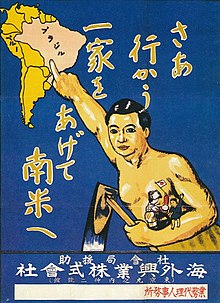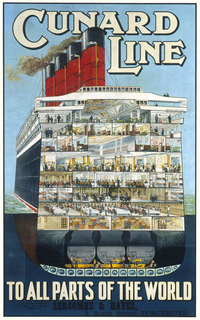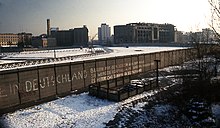Emigration
Refugees and asylum seekers in this sense are the most marginalized extreme cases of migration,[4] facing multiple hurdles in their journey and efforts to integrate into the new settings.[5] Scholars in this sense have called for cross-sector engagement from businesses, non-governmental organizations, educational institutions, and other stakeholders within the receiving communities.For instance, millions of individuals fled poverty, violence, and political turmoil in Europe to settle in the Americas and Oceania during the 18th, 19th, and 20th centuries.[15] In Armenia, for example, the migration is calculated by counting people arriving or leaving the country via airplane, train, railway or other means of transportation.[21] Before 1950, over 15 million people emigrated from the Soviet-occupied eastern European countries and immigrated into the west in the five years immediately following World War II.[26] In 1961, East Germany erected a barbed-wire barrier that would eventually be expanded through construction into the Berlin Wall, effectively closing the loophole.[29] Other countries with tight emigration restrictions at one time or another included Angola, Egypt,[30] Ethiopia, Mozambique, Somalia, Afghanistan, Burma, Democratic Kampuchea (Cambodia from 1975 to 1979), Laos, North Vietnam, Iraq, South Yemen and Cuba.


ImmigrationmigrationThe Emigrants (disambiguation)Emigrate (disambiguation)push and pull factorsrefugeeseeking asylumForced displacementpopulation transferethnic cleansingHistory of human migrationChinese diasporaCunard LineRMS Aquitaniaovercrowdinggovernment transparencyfreedom of speechfreedom to choose religionResource depletionscarcityausterityMilitary draftterrorismRecessioneconomic collapseFamineCultural fightsother cultural groupsquality of lifecost of livingchain migrationProsperityeconomic surplusinternational migrationJews escaping from German-occupied EuropeYeridaSwedish emigration to the United StatesEastern Bloc emigration and defectionIllegal emigrationPanmunjeomOperation KeelhaulBerlin WallEast GermanyManchuriaWillow PalisadeSoviet Socialist RepublicsSoviet Unioninternal passport controlsPropiska101st kilometreWorld War IIEastern Blocthe westEast GermansWest GermanyBerlinGerman reunificationdissolution of the Soviet UnionMongoliaNorth KoreaAngolaEthiopiaMozambiqueSomaliaAfghanistanDemocratic Kampuchea (Cambodia from 1975 to 1979)North VietnamSouth YemenCanvas ceilingDeportationDiasporaÉmigréExpatriateFeminization of migrationFoot votingHuman capital flightHuman migrationSettlementInternational Organization for MigrationMigration LettersPolitical asylumPolitical migrationRMS MooltanSeparation barrierSnowbird (people)XenophobiaPopulationDemographics of the worldDemographic transitionEstimates of historical world populationPopulation growthPopulation momentumProjections of population growthWorld populationPopulationbiologyPopulation declinePopulation densityPhysiological densityPopulation dynamicsPopulation modelPopulation pyramidPopulationecologyBiocapacityCarrying capacityI = P × A × TKaya identityMalthusian growth modelOvershoot (population)World3 modelEugenicsDysgenicsHuman overpopulationMalthusian catastropheHuman population planningCompulsory sterilizationFamily planningOne-child policyTwo-child policyOverconsumptionPolitical demographyPopulation ethicsAntinatalismMere addition paradoxNatalismNon-identity problemReproductive rights